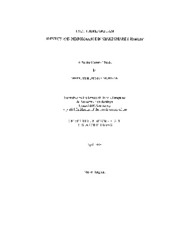| dc.description.abstract | The command to "Know thyself," ascribed to Greek wisdom, and further propounded by Socrates' proclamation "the unexamined life is not worth living" suggests that the prerequisite for life extends beyond mere existence to self-reflection. The emergence of selfhood in the Renaissance was due to the artists and thinkers of the time, who in obedience to the command to know thyself, engaged in reflection upon the self and further sought to express this selfhood. Shakespeare's drama Hamlet depicts the emergent interiority of the individual, through the character of Hamlet. In the character of Hamlet, Shakespeare gives shape to the struggle of man to apprehend an understanding of himself and his fellow men. Hamlet's emergent identity is in contrast to the drunken revelries of his native Denmark, to the effect that Hamlet experiences isolation from the other characters, and frustration as he cannot express his inner self. The Renaissance Man moves beyond the requirements of daily life to become a creator, whether of art, ideas, or scientific experiment. He responds to both internal impulses and external inspiration to attempt to reflect the cosmos in which he lives. Such creative expression is necessary to bring forth the developing inner self, yet Hamlet is called to be a force of destruction in avenging his father's murder, a requirement quite antithetical to his emergent selfhood. Hamlet's need for creative expression and his duty of revenge prove irreconcilable in the play, as the destiny of the play moves from cosmos to chaos and destruction. Hamlet is Shakespeare's most theatrically conscious play, incorporating the language of theater, as well as a play within the play. The arrival of a troupe of players present Hamlet with an opportunity for creative expression as Hamlet acts as both playwright and director to the players. The biblical God asserts, "I am that I am" philosopher Ren ̌Descartes, "I think therefore I am," and the character of Hamlet "I act therefore I am," suggesting that the developing inner self, must find outward expression to be actualized. | en |


